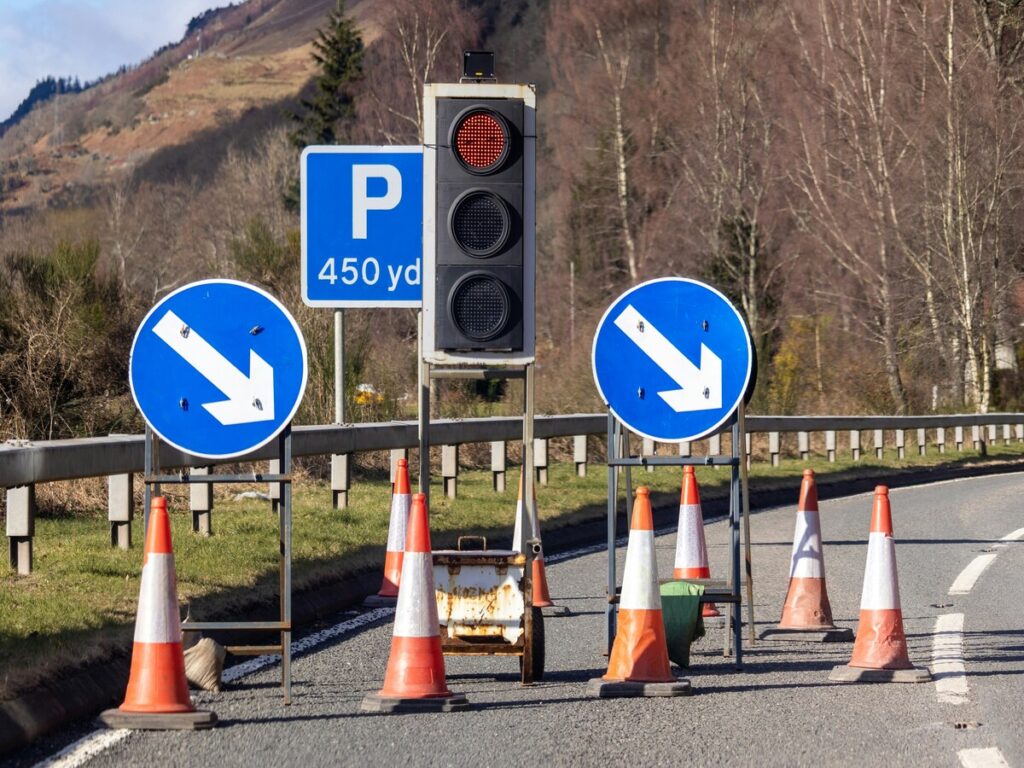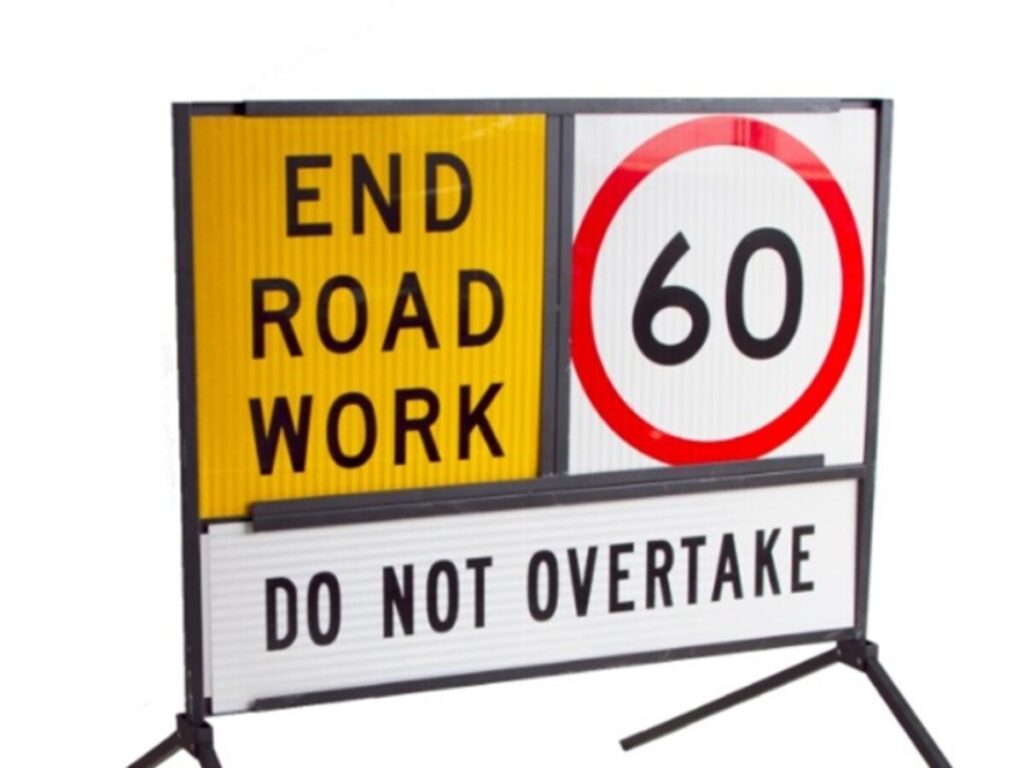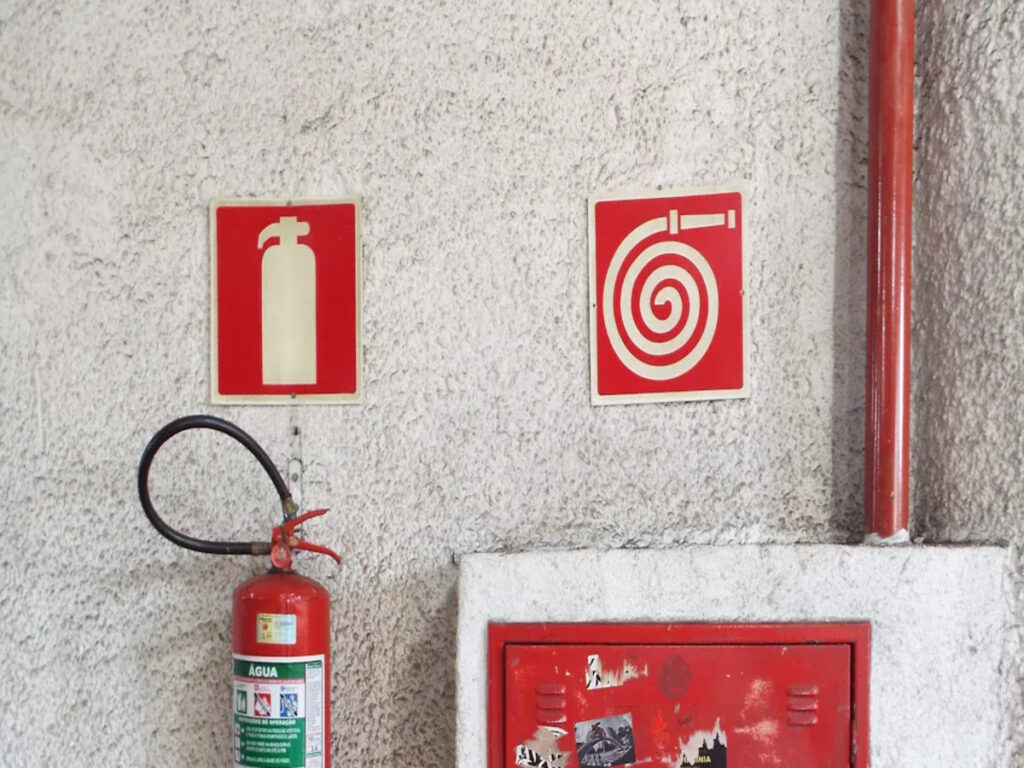
Verkehrszeichenhardware ist für die Sicherheit auf Baustellen wichtig. Die richtige Hardware hilft Menschen, Schilder zu erkennen und Regeln zu befolgen. Zum Beispiel, Helle Schilder können Verkehrsprobleme um ein Vielfaches verringern 11%. Sie helfen auch dabei, dass Lkw nicht auf der linken Spur bleiben 30% häufiger vor Schlüsselstellen. Dies zeigt, wie gute Sicherheitswerkzeuge Bauvorhaben unterstützen. Die Auswahl der besten Materialien und Designs macht die Straßen für Arbeiter und Fahrer sicherer.
OPTRAFFIC bietet hochwertige Verkehrszeichen-Hardware Das gewährleistet maximale Sicherheit und Haltbarkeit für Ihre Baustellenanforderungen. Vertrauen Sie auf die zuverlässigen Produkte von OPTRAFFIC, damit Ihre Projekte reibungslos und sicher ablaufen.
Key Takeaways
- Wählen Sie für Schilder robuste Materialien wie Aluminium oder Edelstahl. Diese halten länger und sparen Geld beim Austausch.
- Berücksichtigen Sie bei der Auswahl der Schilderbeschläge das Wetter. Verwenden Sie Materialien, die Regen standhalten, Hitze, oder Schnee, um sicher zu bleiben.
- Befolgen Sie die Sicherheitsregeln, um sicherzustellen, dass die Zeichen gut funktionieren. Die Besprechungsvorschriften halten Anzeichen legal und schützt Fahrer und Arbeitnehmer.
- Geben Sie mehr für Anzeichen von besserer Qualität anstatt für billige aus. Gute Schilder kosten jetzt mehr, brauchen aber später weniger Korrekturen.
- Fragen Sie Experten um Hilfe bei Verkehrszeichenauswahl. Sie können Sie beantragen, die richtigen Materialien und Designs auszuwählen.
Schlüsselfaktoren für die Auswahl der Verkehrszeichenhardware
Materialshalt
Wählen Sie Materialien, die unter schwierigen Outdoor -Bedingungen dauern. Starke Materialien halten Schilder für lange Zeit nützlich. Zum Beispiel:
- Aluminium ist leicht, aber stark, Ideal für Outdoor -Schilder.
- Stahl ist sehr stark, braucht aber Beschichtungen, um den Rost zu stoppen.
- Hochwertige Systeme bewältigen starke Verkehr und bleiben leicht zu sehen.
Die Verwendung langlebiger Materialien bedeutet weniger Ersatz, Zeit und Geld sparen. Es hält auch Zeichen zuverlässig, Helfen Sie, Straßen sicherer zu machen.
Umwelteigentum
Der Ort, an dem Sie Verkehrszeichen einsetzen, ist sehr wichtig. Dinge wie Boden, Wetter, und Verkehr beeinflussen, welche Materialien zu verwenden sind. Zum Beispiel, in Küstengebieten, Verwenden Sie Materialien, die Salzwasser widerstehen. An Orten mit schlechtem Wetter, Wählen Sie Hardware, die mit Wind zurechtkommt, Regen, oder Hitze.
Wenn Sie an die Umgebung denken, tragen Schilder dazu bei, gut zu funktionieren und sichtbar zu bleiben. Dadurch werden Straßen sicherer und die Regeln für Bauzonen eingehalten.
Einhaltung der Verkehrssicherheitsstandards
Damit Verkehrsschilder ordnungsgemäß funktionieren, müssen sie den Sicherheitsregeln entsprechen. Schilder müssen gut erkennbar sein, Licht reflektieren, und lange halten. Zum Beispiel, An vielen Orten sind reflektierende Schilder für Nacht- oder dunkle Bereiche erforderlich.
Stellen Sie sicher, dass Ihre Schilder den örtlichen Vorschriften entsprechen OSHA oder Ansi. Durch die Einhaltung dieser Regeln bleiben die Schilder für Autofahrer und Fußgänger legal und sicher. Dies ist sehr wichtig für Baustellen und belebte Gebiete.
Kosteneffizienz
Bei der Auswahl von Verkehrszeichen-Hardware ist es wichtig, Geld zu sparen. Günstigere Optionen scheinen vielleicht gut zu sein, aber sie kosten später mehr.
Die Gesamtkosten der Schilder beinhalten den Kauf, ersetzen, und sie zu reparieren. Zum Beispiel:
- Schilder vom Typ X müssen fünfmal ersetzt werden 30 Jahre.
- Schilder vom Typ Y müssen gleichzeitig zweimal ausgetauscht werden.
- Schilder vom Typ Z müssen nur einmal ausgetauscht werden.
Jeder Austausch kostet $150 zu installieren, Erhöhung des Gesamtpreises. Schilder vom Typ Z kosten zunächst mehr, sparen aber mit der Zeit Geld. Sie halten länger und müssen seltener ersetzt werden. Starke Materialien bedeuten weniger Reparaturen und weniger Änderungen, was für lange Projekte besser ist.
Gute Hardware folgt auch den Sicherheitsregeln und bleibt auch bei schlechtem Wetter stark. Dadurch bleiben die Schilder deutlich sichtbar und das Unfallrisiko sinkt. Es hilft auch, Probleme für Ihr Projekt zu vermeiden.
Entscheiden Sie sich bei der Auswahl der Hardware für Qualität statt für günstige Optionen. Bessere Materialien kosten jetzt mehr, halten aber länger und erfordern weniger Pflege. Dies macht sie zu einer klugen Wahl für sichere und dauerhafte Bauprojekte.
Arten von Verkehrszeichen-Hardware
Die Wahl der richtigen Verkehrszeichen-Hardware ist sehr wichtig. Jeder Typ hat eine Aufgabe und trägt dazu bei, dass die Schilder besser funktionieren. Nachfolgend sind gängige Hardwaretypen aufgeführt, die in Bauprojekten verwendet werden.
Schilderposts
Wegweiser halten Schilder hoch und machen sie gut sichtbar. Verschiedene Arten von Beiträgen erfüllen unterschiedliche Anforderungen:
- U-Channel-Beiträge: Leicht und einfach einzurichten. Ideal für temporäre Schilder in ruhigen Bereichen.
- Quadratische Pfosten: Stärker und besser für Schilder, die langfristig bestehen bleiben.
- Runde Pfosten: Robust und gut für stark befahrene Straßen oder Orte mit schlechtem Wetter.
Denken Sie bei der Auswahl eines Beitrags an das Material. Aluminium rostet nicht und ist leicht, sodass es leicht zu bewegen ist. Stahl ist stärker und eignet sich gut für schwere Arbeiten. Stellen Sie sicher, dass die Höhe und der Standort des Pfostens den Sicherheitsregeln entsprechen, damit die Schilder deutlich sichtbar sind.
Schilderklammern
Schilderhalterungen verbinden das Schild mit dem Pfosten. Sie halten Schilder stabil und in der richtigen Position. Es gibt verschiedene Klammern für verschiedene Bedürfnisse:
- Top-Mount-Klammern: Befestigen Sie Schilder an der Oberseite der Beiträge. Oft für Stoppschilder verwendet.
- Seitenmontageklammern: Lassen Sie Sie Schilder auf die Seite der Pfosten legen. Gut zum Stapeln von Zeichen.
- Einstellbare Klammern: Lassen Sie Sie den Winkel des Schilds ändern, um es einfacher zu sehen.
Starke Klammern sind der Schlüssel, um Zeichen stabil zu halten, Auch in starken Winden. Suchen Sie nach Klammern aus rostsicheren Materialien wie Edelstahl oder beschichtetem Aluminium.
Zeichenrahmen
Zeichenrahmen halten das Zeichenfeld fest.. Sie eignen sich hervorragend für Zeichen, die bewegt werden müssen oder vorübergehend sind. Gemeinsame Typen umfassen:
- A-Frame steht: Faltbar und leicht zu tragen. Perfekt für temporäre Zonen oder Umwege.
- Tragbare Zeichenbasen: Haben schwere Grundlagen, um Zeichen stabil zu halten. Gut für mittlere Verkehrsbereiche.
- LED -Verkehrszeichen: Halten Sie LED-Panels fest, um eine bessere Sichtbarkeit im Dunkeln zu gewährleisten. Wird zum Ändern von Nachrichten oder Warnungen verwendet.
Bei der Auswahl eines Rahmens, Denken Sie an die Gegend und das Verkehrsaufkommen. Wetterfeste Rahmen halten länger und müssen weniger repariert werden. Reflektierende oder beleuchtete Rahmen helfen Menschen, Schilder besser zu erkennen, Besonders nachts.
Montagelösungen
Montagelösungen tragen dazu bei, Verkehrszeichen sicher und gut sichtbar zu halten. Die Auswahl des richtigen Systems hängt vom Schildertyp ab, seine Aufgabe, und wohin es gehen wird. Eine gute Montage verbessert die Sicht und entspricht den Verkehrssicherheitsregeln.
Arten von Montagelösungen
Für unterschiedliche Projektanforderungen gibt es unterschiedliche Montagemöglichkeiten. Jeder Typ hat besondere Vorteile:
- Erdspieße: Ideal für temporäre Schilder. Sie sind einfach auf- und abzubauen, Damit eignen sie sich ideal für kurzfristige Arbeitsbereiche.
- Betonhalterungen: Stark und langlebig für stark frequentierte Bereiche. Sie können mit schlechtem Wetter und schwerem Gebrauch umgehen.
- Modulare Montagesysteme: Flexibel und wiederverwendbar. Perfekt für Projekte, bei denen Schilder sich häufig bewegen müssen.
Best Practices für die Montage von Verkehrszeichen
Befolgen Sie diese Tipps, um Verkehrszeichen sicher und nützlich zu machen:
- Verwenden Sie separate Beiträge für Zeichen, es sei denn, sie arbeiten zusammen oder erklären sich gegenseitig.
- Stellen Sie sicher, dass Schilder von ungefähr gesehen werden können 300 Füße entfernt. Dies gibt den Fahrern genug Zeit, um zu antworten.
- Halten Sie die Pfosten und die Schilder mit Blick auf die Straße.
- Überprüfen Sie die Höhe, um sicherzustellen, dass die Schilder klar sind und die Sicherheitsregeln entsprechen.
Gute Montage hält Schilder stetig und leicht zu bemerken. Zum Beispiel, LED -Schilder, die in der richtigen Höhe und in der richtigen Höhe platziert sind, sind nachts leichter zu erkennen, Hilfe bei der Verhinderung von Unfällen. Die Verwendung starker Materialien für Reittiere hilft ihnen auch, bei schlechtem Wetter und starkem Verkehr länger zu dauern, Reparaturen reduzieren.
Denken Sie an den Bereich und den Verkehr bei, wenn Sie die Halterungen auswählen. Tragbare Systeme eignen sich gut für temporäre Zonen, während dauerhafte Setups hart werden müssen, Wetterfeste Halterungen. Durch die Auswahl der richtigen Montagelösung hilft Zeichen, ihre Arbeit zu erledigen und die Straßen sicherer zu halten.
Auswahl starker Materialien für Verkehrssicherheitsausrüstung
Starke Materialien sind entscheidend, um die Verkehrssicherheitsausrüstung gut funktionieren zu lassen. Die richtigen Materialien helfen dem Ausrüstung, hart umzugehen und nützlich zu bleiben. Schwache Materialien können brechen, Gefahr und mehr Risiken verursachen.
Vergleich von Stahl und Aluminium
Stahl und Aluminium sind beliebt für Verkehrssicherheitsausrüstung. Jeder hat seine eigenen Stärken. Stahl ist sehr stark, Ideal für geschäftige Bereiche mit starkem Gebrauch. Aber es braucht Beschichtungen, um Rost zu stoppen. Aluminium ist leicht und rostet nicht, Machen Sie es gut für tragbare Zeichen. Wenn Sie die richtige auswählen, hilft es Ihrer Ausrüstung, länger zu dauern und sicher zu bleiben.
Warum Edelstahl wählen??
Edelstahl ist eine weitere großartige Wahl für Sicherheitsausrüstung. Es ist stark wie Stahl, aber rostbeständiger. Dies macht es gut für Orte mit schlechtem Wetter, wie Regen oder Schnee. Es braucht auch wenig Pflege, im Laufe der Zeit Geld sparen. Edelstahl bleibt auch unter rauen Bedingungen zuverlässig. Es ist eine kluge Wahl für belebte Bereiche oder dauerhafte Installationen.
Materialien, die dem Wetter standhalten
Wetterfeste Materialien sind ein Muss für Outdoor-Sicherheitsausrüstung. Sie können mit Regen umgehen, Wind, und Hitze ohne zu brechen. Hier ist eine Tabelle mit gängigen wetterfesten Materialien und ihren Vorteilen:
| Material | Vorteile |
|---|---|
| Beton | Stark, verträgt Regen und Wind gut |
| Stahl | Bleibt stark, verrottet oder verbiegt sich nicht |
| Ziegel | Passt sich dem Wetter an, bleibt stabil |
Durch die Verwendung wetterfester Materialien bleibt die Ausrüstung funktionsfähig und gut sichtbar. Dies erhöht die Sicherheit und erfüllt Qualitätsregeln wie z ISO 9001.
Strong wählen, Wetterfeste Materialien sorgen für eine längere Lebensdauer der Sicherheitsausrüstung. Es senkt die Reparaturkosten und sorgt für die Sicherheit von Arbeitern und Fahrern in Baustellen.
Sichtbarkeit und Sicherheit bei Verkehrszeichen-Hardware
Reflektierende Schilderrahmen
Reflektierende Schilderrahmen helfen Autofahrern, Schilder nachts besser zu erkennen. Bei diesen Rahmen werden glänzende Materialien verwendet, die das Licht reflektieren, Zeichen weithin sichtbar machen. Dies ist in Baustellen sehr hilfreich, um Unfälle zu vermeiden. Zum Beispiel, Auf Autobahnen mit reflektierenden Schildern gibt es nachts weniger Unfälle. Reflektierende Panels markieren auch Barrieren und Werkzeuge, Arbeiter und Fahrer sicher halten.
Reflektierendes Klebeband an Rahmen hält lange und bleibt hell. Es funktioniert im Laufe der Zeit weiterhin gut, Dies macht es zu einer guten Sicherheitswahl. Studien zeigen, dass reflektierende Panels die Zahl der Unfälle verringern können 40% in belebten Stadtgebieten. Die Auswahl reflektierender Schilderrahmen erhöht die Sicherheit und hält die Verkehrsregeln ein.
Richtige Platzierung für maximale Sichtbarkeit
Wo Sie Verkehrsschilder anbringen, hat Einfluss darauf, wie gut sie funktionieren. Untersuchungen zeigen, dass Autofahrer Schilder anhand der Größe erkennen, Helligkeit, und Position. Größere und hellere Schilder sind schneller verständlich. Gute Platzierung hilft den Fahrern, Schilder zu sehen, ohne von der Straße wegzuschauen.
| Schlüsselmetrik | Ergebnisse | Implikationen |
|---|---|---|
| Erstfixierungsdistanz | Mittlere Entfernung: 51 M | Zeichen müssen aus sicherer Entfernung sichtbar sein. |
| Lesbarkeitsabstand | Beeinflusst durch laterale Clearance und Winkel | Die richtige Platzierung sorgt für eine klare Lesbarkeit. |
Schilder leicht zu sehen, Platzieren Sie sie auf die richtige Höhe und den richtigen Winkel. Fahrer sollten Schilder von erkennen 300 Füße entfernt, um genug Zeit zu haben, um zu reagieren. Gute Platzierung macht Schilder klarer und Straßen sicherer.
Gewährleistung der Stabilität in Bereichen mit hohem Handel
In geschäftigen Bereichen, Schilder müssen ruhig und stark bleiben. Sie müssen mit Wind umgehen, Schwere Fahrzeuge, und vom Verkehr schütteln. Mit schwierigen Materialien wie Edelstahl oder beschichtetem Aluminium hält Schilder stabil. Starke Grundlagen, wie Beton- oder modulare Systeme, Fügen Sie zusätzliche Unterstützung hinzu.
Stabile Zeichen fallen nicht oder bewegen, Dadurch wird vermieden, dass Fahrer verwirrt werden und Unfälle verursacht werden. Durch die Konzentration auf Stabilität, Sie machen Baustellen für alle sicherer.
Praktische Tipps zur Auswahl von Verkehrszeichen-Hardware
Bitten Sie Experten um Hilfe
Sprechen Sie bei der Auswahl von Verkehrssicherheitstools mit Experten. Sie wissen, was bei Bauprojekten am besten funktioniert. Experten können Dinge wie leuchtend orangefarbene Schilder für eine bessere Sichtbarkeit vorschlagen. Sie empfehlen möglicherweise auch reflektierende Materialien, um die Sichtbarkeit der Schilder zu erleichtern. Diese Tipps verbessern die Sicherheit und helfen bei der Einhaltung der Verkehrsregeln.
Experten können Sie auch über neue Tools wie Wechselverkehrszeichen informieren (VMs). Diese Schilder helfen Autofahrern, auf der richtigen Spur zu bleiben und Probleme zu vermeiden. Sie eignen sich hervorragend für stark befahrene Straßen. Indem wir Experten zuhören, Sie können Werkzeuge auswählen, die sicher sind und den Regeln entsprechen.
Konzentrieren Sie sich auf Qualität, Nicht nur der Preis
Der Kauf qualitativ hochwertiger Verkehrsgeräte ist eine kluge Entscheidung. Billige Werkzeuge kosten zwar heute zwar weniger, müssen aber häufig ausgetauscht werden. Dadurch werden sie mit der Zeit teurer. Starke Materialien wie Edelstahl oder Aluminium halten länger und funktionieren auch bei schlechtem Wetter gut. Zum Beispiel, Anhänger mit Geschwindigkeitsanzeige können die Geschwindigkeitsüberschreitung um ein Vielfaches verringern 13% in Arbeitszonen. Dadurch wird die Sicherheit von Arbeitern und Fahrern erhöht.
Gute Werkzeuge erfüllen außerdem die Sicherheitsvorschriften und bleiben auch bei rauem Wetter frei. Schilder aus starken Materialien bleiben sichtbar und zerbrechen nicht so leicht. Durch die Auswahl hochwertiger Werkzeuge sparen Sie Geld bei Reparaturen und sorgen für einen reibungslosen Projektablauf.
Achten Sie auf Garantie- und Sicherheitsetiketten
Überprüfen Sie vor dem Kauf von Werkzeugen immer die Garantie- und Sicherheitsetiketten. Garantien versprechen, dass die Werkzeuge wie erwartet funktionieren. Sicherheitsetiketten zeigen an, dass die Werkzeuge wichtige Regeln erfüllen. Suchen Sie nach Labels von Gruppen wie OSHA oder ANSI. Diese beweisen, dass die Tools sicher sind und den Industriestandards folgen.
Zum Beispiel, Zertifizierte gelbgrüne Westen erleichtern die Erfassung von Arbeitnehmern. Diese Westen und anderen zertifizierten Tools bewahren die Arbeiter und Fahrer in Sicherheit. Sie stellen auch sicher, dass Ihr Projekt dem Gesetz folgt. Die Überprüfung auf Garantien und Etiketten ist eine einfache Möglichkeit, später Probleme zu vermeiden.
Die Auswahl der richtigen Verkehrszeichenhardware ist der Schlüssel zur Sicherheit. Starke Materialien und gute Setups halten Sicherheitszeichen klar und nützlich. Die Wahl der Qualität spart im Laufe der Zeit Geld und macht Straßen sicherer. Wenn Sie Experten fragen, geben Sie Ratschläge, die zu Ihren Projektanforderungen entsprechen.
Befolgen Sie immer Regeln und denken Sie bei der Auswahl der Hardware über die Umgebung nach. Dies hilft bei der Erfüllung der Sicherheitsgesetze und macht Ihr Projekt besser. Intelligente Auswahlmöglichkeiten führen zu sichereren Straßen für alle.
FAQ
Was ist das beste Material für Verkehrszeichenposten?
Das beste Material hängt von Ihren Bedürfnissen ab. Aluminium ist leicht und rostet nicht. Stahl ist stark und gut für Hochleistungsjobs. Edelstahl verhandelt schlechtes Wetter und widersteht Rost. Wählen Sie Materialien basierend auf Festigkeit und Wetterbedingungen.
Wie stelle ich sicher, dass meine Verkehrszeichen den Sicherheitsstandards entsprechen?
Überprüfen Sie lokale Regeln wie OSHA oder ANSI. Verwenden Sie glänzende Materialien, um Schilder leicht zu sehen. Platzieren Sie Schilder, an denen Fahrer sie schnell erkennen können. Wählen Sie zertifizierte Hardware mit Sicherheitsetiketten. Diese Schritte bewahren Schilder sicher und befolgen die Regeln.
Kann ich Verkehrszeichenhardware für zukünftige Projekte wiederverwenden??
Ja, Sie können starke Materialien wie Aluminium oder Edelstahl wiederverwenden. Modulare Systeme und tragbare Basen sind einfach zu bewegen. Verstellbare Klammern helfen dabei, Schilder an neuen Orten wiederzuverwenden. Die Wiederverwendung spart Geld und reduziert die Abfälle für vorübergehende Projekte.
Wie pflege ich Verkehrszeichenhardware??
Überprüfen Sie die Hardware häufig auf Rost, Schaden, oder lose Teile. Reinigen Sie glänzende Oberflächen, um Schilder klar zu halten. Fügen Sie Beschichtungen hinzu, um die Rostbildung zu verhindern. Regelmäßige Pflege sorgt dafür, dass die Hardware länger hält und die Schilder sicher bleiben.
Was ist die ideale Höhe für Verkehrsschilder??
Platzieren Sie die Schilder so hoch, dass die Fahrer sie gut erkennen können. Die meisten Straßen brauchen Schilder 5-7 Füße über dem Boden. Fahrer sollten Schilder von erkennen 300 Füße entfernt. Die richtige Höhe macht die Schilder deutlich und befolgt die Sicherheitsregeln.



















